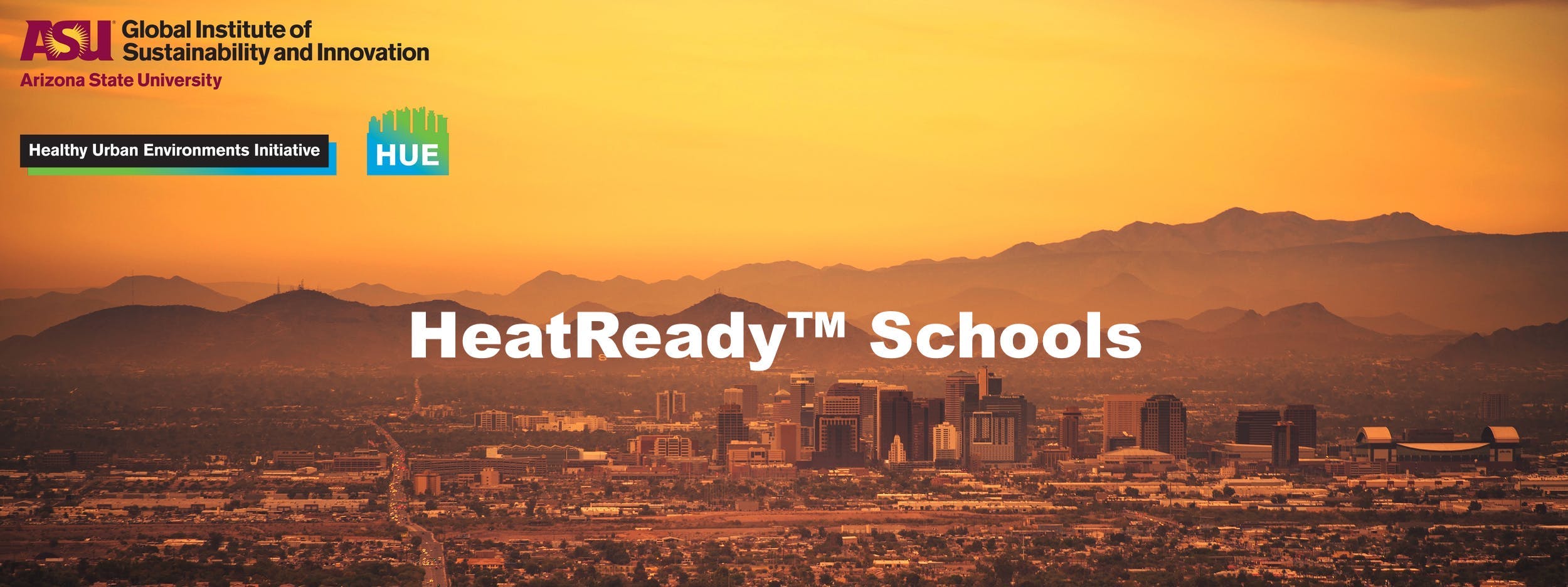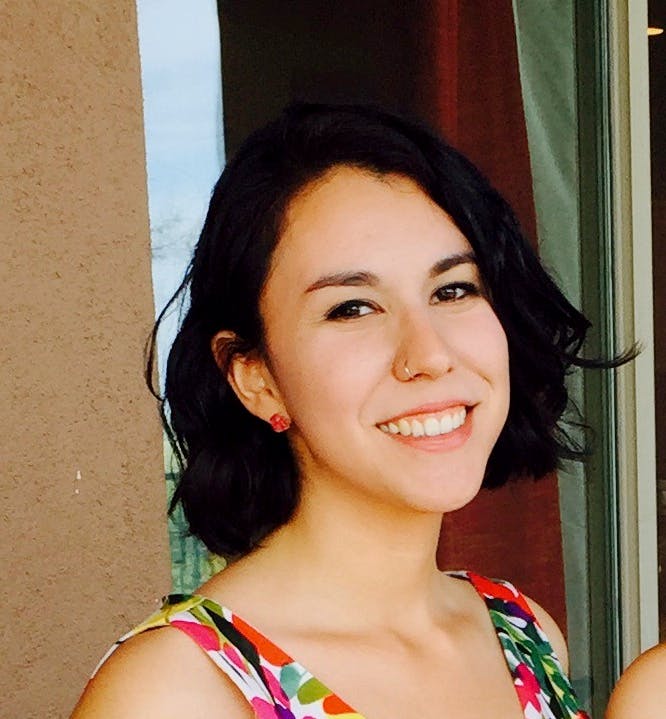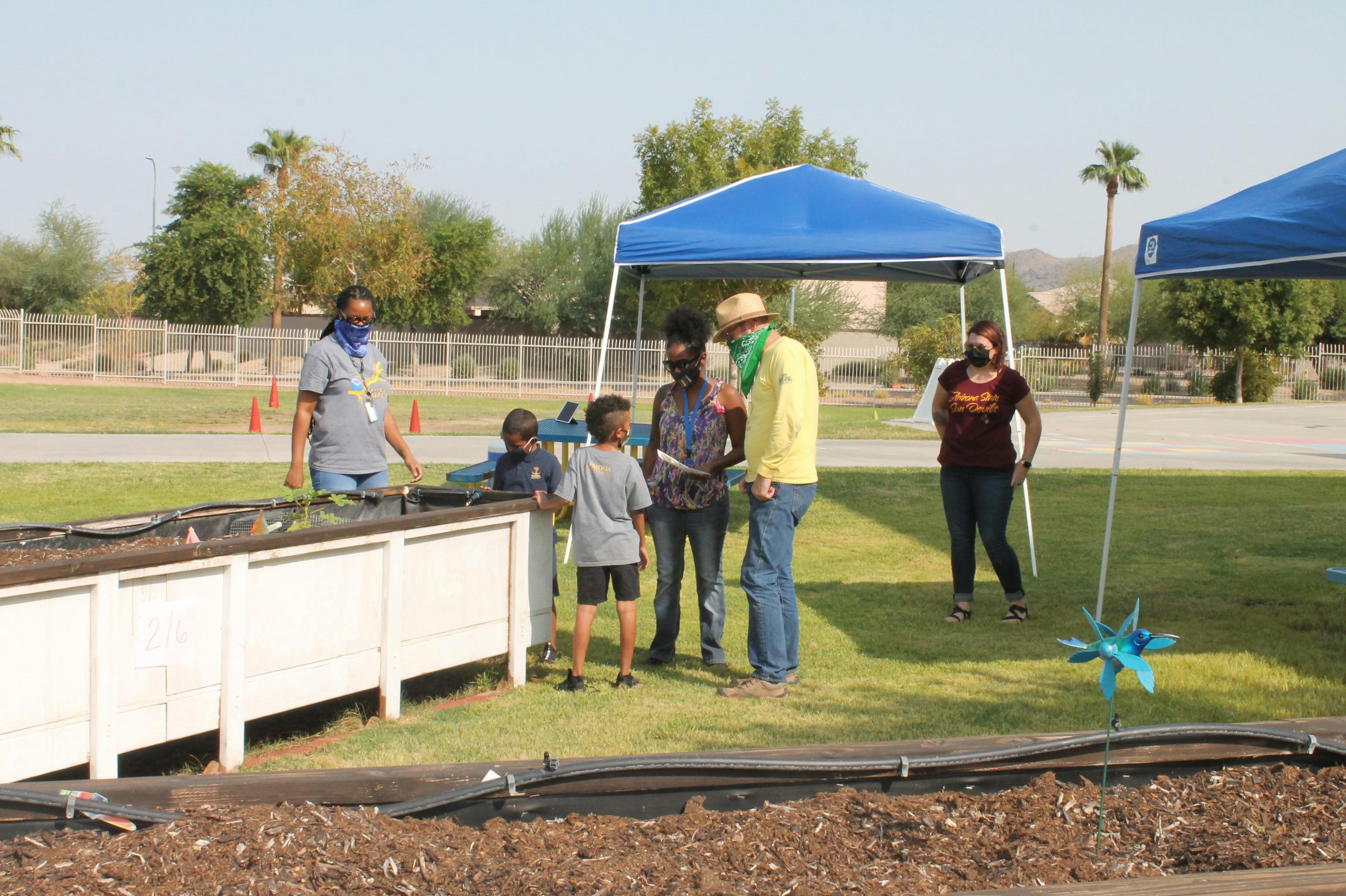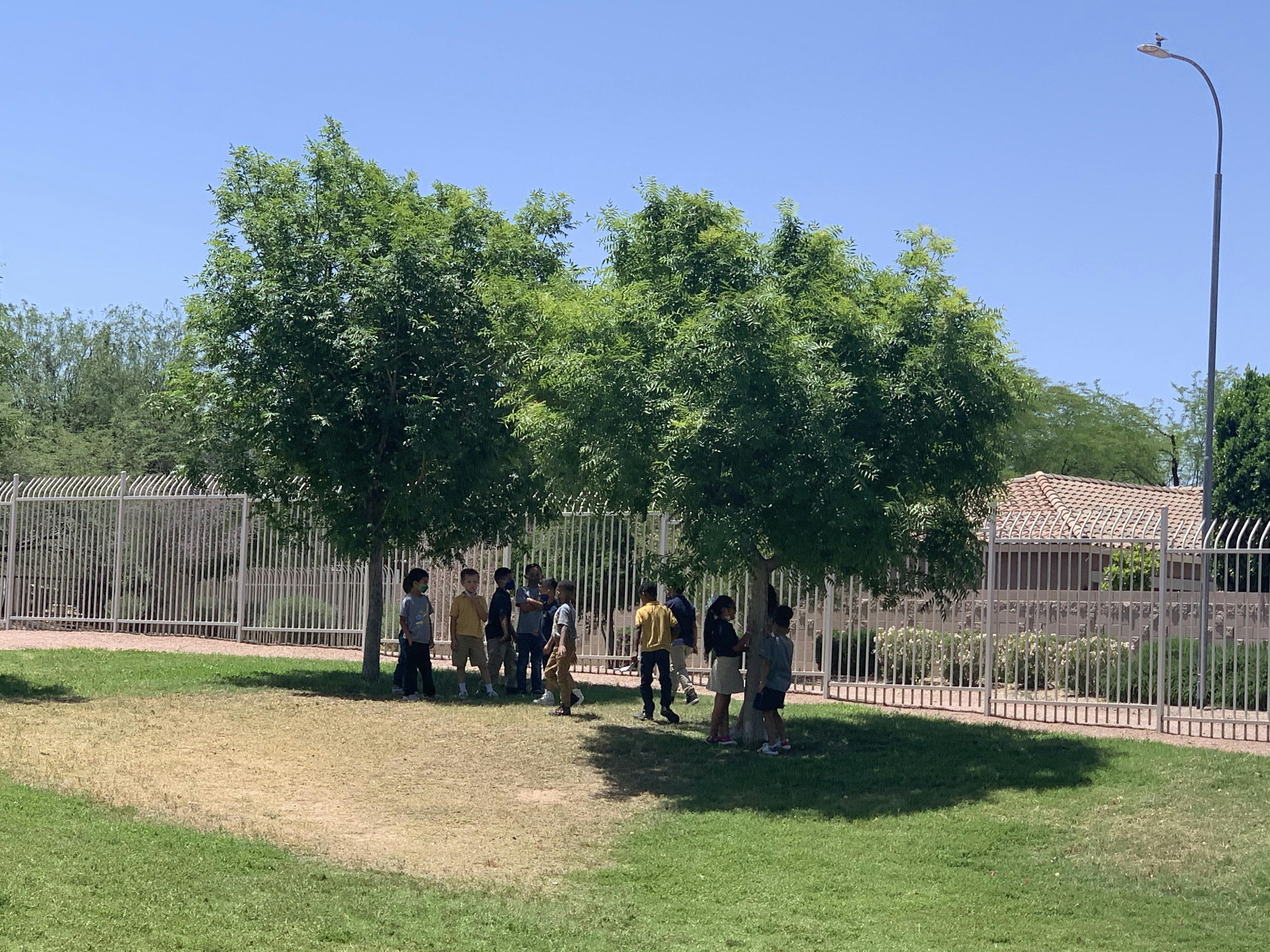HeatReady Schools
Click on the HOW-TO TUTORIAL below for navigating this webpage and becoming a HeatReady School!
What are HeatReady Schools? | Those that are increasingly able to identify, prepare for, mitigate, track, and respond to the negative impacts of school ground heat. The overarching goal is to improve the safety and protection measures of children exposed to extreme heat during the school day by creating a HeatReady Schools Tool. Because most areas prioritize city-scale efforts to tackle rising temperatures, we are focusing on community-scale efforts to improve heat readiness for greater urban connectivity. |
 ASU Partners & Paideia Academies planting vegetables in their LEHR garden!  Students playing during recess and cooling off in the shade! | |
Why are HeatReady Schools important? | Schools are generally hubs for their surrounding community; they connect parents, teachers, children, residents, and families, meaning all are impacted by school heat conditions, preparedness, and policies. Children are the leaders of our future and one of the most vulnerable populations to extreme heat! As temperatures rise both indoors and outdoors, educational performance and cognitive development are negatively impacted by extreme heat. |
 Playground structures are often made of materials that absorb heat, which has resulted in kids burning their skin!  Youth are vulnerable to extreme heat, both indoors and outdoors! | |
Who is the HeatReady School Tool intended for? | Your school can choose your own HeatReady Champion! Someone who is able to take lead on organizing/initiating action at your school to improve heat readiness. Our general suggestions for that HeatReady Champion role include, but are not limited to: Principals, Vice Principals, nurse and/or health aides, PTA members, teacher's committees, sports coaches, etc. |
Some of Paideia's Lighthouse Team planting trees on their campus!
Students and staff working to create more shade in hot areas! | |
How do I use the HeatReady School Tool & website? | 1. Begin by seeing what level of Heat Readiness your school is at right now!
3. Finally, fill out the "let us know how we're doing" in the BOTTOM RIGHT to give us feedback on your experience (takes <5 mins to complete!). |
ASU partners Jenni Vanos (left) and William Walker (right) collecting personal
temperature data with MaRTy!

















